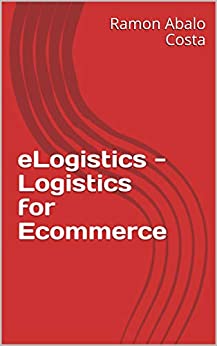One of the areas where it has created more disruption is in the world of logistics, where we have moved to a more direct model, with fewer intermediaries and lower margins, having to adapt to an extremely demanding environment both in the quality of services, as in the immediacy of them while maintaining minimum costs.
The customer has already paid for your product and therefore expects to receive it immediately. How can we give this level of service? How can we reduce our costs to be more competitive on this transparent market?
The objective of this book is to give a vision of a) how logistics affects all the areas of an ecommerce company (from web design to the payment methods we offer); b) teach us the best methods to improve the logistics and supply chain of our ecommerce; c) reduce our logistics costs; d) how to handle the expectations of our customers regarding the service; e) what steps we need to follow to export to other countries.
In the following pages we will answer many of the questions that our consulting clients have asked during these years, and that we have managed to answer thanks to our experience in the logistics sector in companies such as Inditex (Zara), AramexGlobalSolutions and Australia Post eCommerce.
Some of these questions have also been launched by blog readers: ramonabalo.com/blog where I analyse some of the trends in logistics today.
The structure of this book follows the normal process of buying any ecommerce: we start with the web and the considerations that we must have from a logistic point of view when selecting different types of platforms (chapter 1); receipt and import of merchandise for our ecommerce company (chapter 2); warehouse: planning, types of fulfilment depending on your volumes, importance of the packaging on your cost, IT systems, and how to negotiate and run your suppliers (chapter 3); shipment methods and export of goods (types of clearance models), last mile services (chapter 4); returns and most effective ways to handle them (chapter 5); how the logistics impacts your sales, importance of the customer service (chapter 6). Final chapter talks about the blockchain trends and how they will affect the eLogistics.
With eLogistics – Logistics for Ecommerce you will have a better understanding about the logistics of your ecommerce company, be able to be more efficient and reduce your costs, planning your logistics model.
This book is primarily intended for entrepreneurs, owners and managers of ecommerce companies, employees of those companies that want to know more about logistics and how it affects them in their day to day, and for logistics professionals in general.
Finally, we would like to thank you for buying this book because all the profits it generates will be donated to NGOs I have been volunteering and cooperating with for several years.
Product details
- File Size: 2131 KB
- Print Length: 155 pages
- Publication Date: August 6, 2019
- Language: English
- ASIN: B07W6L6P6S
- Text-to-Speech:
Enabled

- Word Wise: Enabled
- Lending: Not Enabled
-
#1948
in Entrepreneurship (Kindle Store) -
#216
in Business Production & Operations -
#618
in Production & Operations











